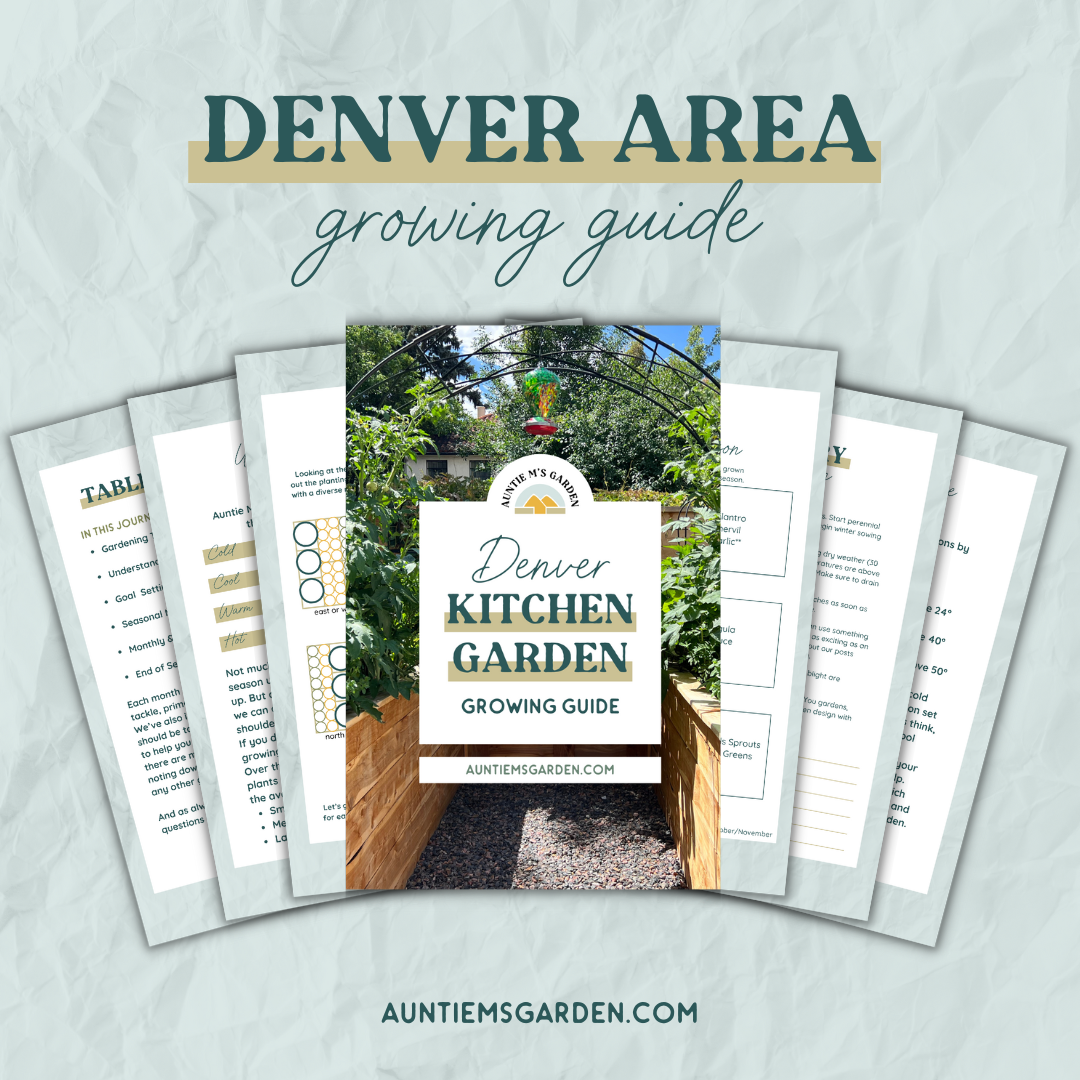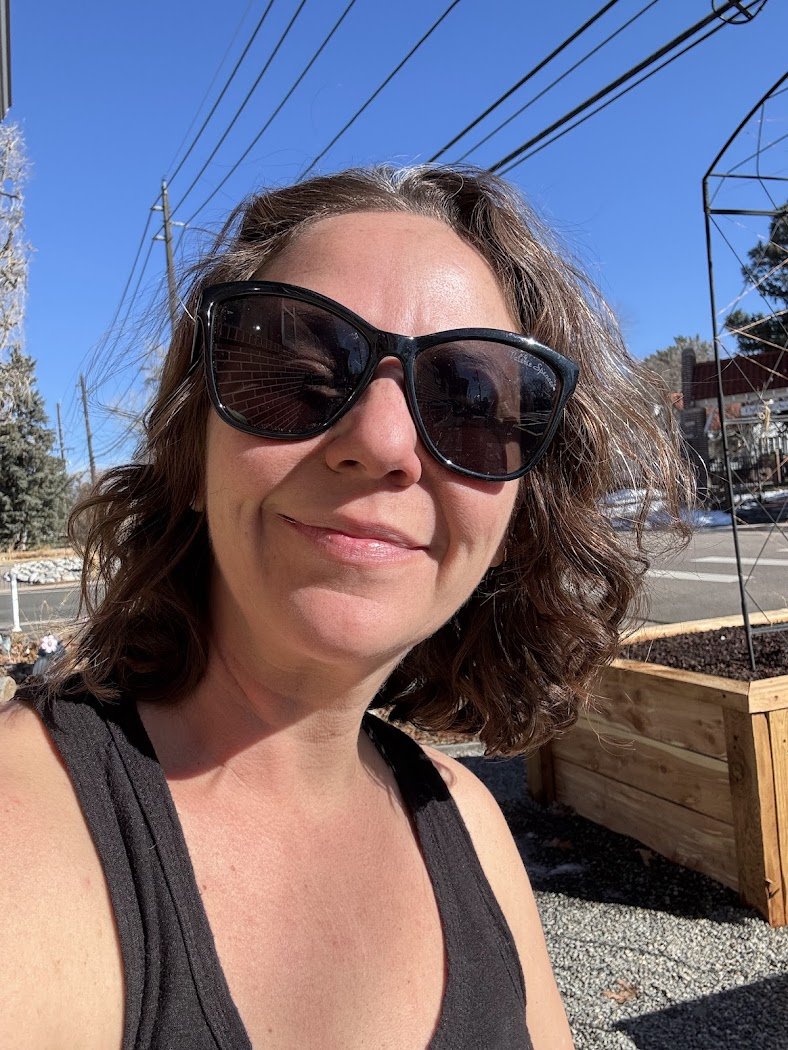How to Spot (and Fix!) Seedling Stress During Hardening Off
Your guide to healthy starts in a Denver backyard kitchen garden
If you’ve been nurturing seedlings indoors, babying them with the perfect grow light setup, singing to them while you water (no judgment, we do it too), the idea of tossing them outside into Colorado’s unpredictable spring can feel... risky.
But hardening off seedlings is essential if you want strong, resilient plants that can thrive in your Denver backyard kitchen garden. This transitional period helps your seedlings toughen up to real-world conditions like wind, sun, and cool nights.
And here’s the truth: even when you follow all the right steps, seedlings can still show signs of stress.
That’s totally normal.
What matters most is knowing how to spot those early warning signs, so you can course correct and keep your garden dreams on track.
Let’s walk through the most common signs of seedling stress specific to Denver’s climate, and what you can do to support your little plant babies through the hardening-off process.
Why Seedlings Get Stressed in Denver (Yep, They’re a Little Dramatic)
Get our Denver Growing Guide now!
Our local growing conditions are beautiful, but let’s face it, they’re not exactly gentle:
High UV exposure thanks to our mile-high altitude
Temperature swings that’ll have you in a hoodie at breakfast and sweating by lunch
Gusty afternoon winds that dry out leaves and soil faster than you can blink
Low humidity that’s tough on tender seedlings trying to adapt
Even with a careful hardening-off schedule, these elements can throw seedlings for a loop. Think of it like plant puberty: awkward, occasionally dramatic, but totally survivable with the right care.
READ NEXT: The Essential Guide to Hardening Off Seedlings in Denver Backyard Gardens
5 Signs Your Seedlings Are Stressed (and How to Help)
1. Wilting Leaves
What it means: Usually a moisture imbalance, either too dry or too wind-exposed.
What to do:
Water gently but deeply in the morning so roots have time to absorb.
Shield young seedlings with a windbreak (think overturned crates, milk jugs, or even an old sheet clipped to stakes).
If they’re in trays, check for rootbound cells and transplant if needed.
Denver-specific tip:
Wind + sun = double dehydration. Don’t assume you’re getting enough water by spraying the tops with a hose. Bottom water your plants in trays for 15 minute so the soil absorbs what it needs.
2. Discoloration (Yellow, Purple, or Pale Leaves)
What it means:
Yellow = overwatering or nutrient deficiency
Purple = cold stress, especially in nightshades like tomatoes and eggplant
Pale = light shock or root stress
What to do:
Make sure pots have drainage and seedlings aren’t sitting in soggy soil.
Hold off on fertilizing until they’ve adjusted to being outside.
Cover or bring them inside when temps drop below 50°F - yes, even in May!
Pro move:
A floating row cover or pop-up greenhouse is worth its weight in gold in spring. Even one unexpected cold night in Denver can set your garden back weeks.
3. Sunscald (Bleached or Crispy Spots on Leaves)
What it means: Too much direct sunlight too soon. Our high-altitude sun packs a punch.
What to do:
Always start seedlings in dappled or morning sun for 1–2 hours a day.
Gradually increase sun exposure by adding an hour each day.
If leaves start to bleach, move them back to shade and give them a rest day.
Pro gardener tip: Think of Denver sunshine like hot sauce: start mild, then build tolerance.
4. Droopy Stems or Stunted Growth
What it means: Possible transplant shock, root restriction, or stress from inconsistent conditions.
What to do:
Transplant to a larger pot or into the garden when roots outgrow their cells.
Give them time. Seedlings often pause growth while they adjust.
Avoid fertilizing until you see signs of new leaf growth.
Real talk: Seedlings are like toddlers: resilient, but not great with change. Be patient and consistent.
5. Brown Edges or Curling Leaves
What it means: Likely windburn, low humidity, or too much fertilizer.
What to do:
Create a buffer from afternoon wind (move trays closer to a fence or wall).
Mist the air around seedlings (not the leaves) during dry, breezy days.
If you recently fertilized, flush the soil with water and skip the next feeding.
Denver reality check:
Our spring winds are legendary. Plan to harden off in a spot with some natural wind protection if possible and gradually increase exposure to windy areas.
How to Monitor Without Micromanaging
You don’t need to babysit your seedlings all day; just build a rhythm.
Here’s a simple Denver-friendly monitoring routine:
Morning: Water, check for wilting, adjust exposure.
Midday: Move seedlings to shade if they’re getting too much sun.
Evening: Look for discoloration, crispy edges, or leaf droop.
Weekly: Take notes! Journaling sun hours, temp swings, and plant responses will turn you into a garden whisperer.
Let Your Denver Backyard Kitchen Garden Thrive by hardening off strong seedlings
Your seedlings are learning to survive the real world—and so are you. Recognizing stress signs early means fewer losses and stronger plants that are ready to grow, bloom, and feed your table.
And remember: this isn’t just about flowers and tomatoes. It’s about growing food, confidence, and joy right outside your kitchen door.
Final Word from Elisa
Every gardener loses a seedling now and then (I have a plant graveyard every year with failed seedlings). The magic is in showing up, learning as you go, and adjusting with love.
Your Denver backyard kitchen garden is about more than perfect plants. It’s about building resilience—one leaf at a time. 💚
Got seedling questions or hardening-off horror stories? Drop them in the comments or DM me anytime. We’re in this together!
Give Your Garden the Best Start This Year!
Whether you’re starting from scratch or you’re a garden pro, let us support you in your garden this season. We’ve got something for everyone!
🌱 Want to learn exactly what to grow (and when) in Denver?
Check out our Denver Growing Guide for in-depth advice, planting tips, and planning strategies! Let’s start planning your best garden yet.
🌱 Need help designing a garden that works for YOU?
We offer consultations, custom garden and landscape designs, and maintenance packages. Sign up for a consultation today and let’s create a space that nurtures both your plants and your well-being.
Have questions or want to share your gardening success stories?
Drop a comment below, or reach out through our Contact Page!
Check out our free resources or services!
Save this Blog on Pinterest!
**This post may contain affiliate links, which means I earn a small profit if you click on the link to make a purchase. Other links are not sponsored, because I also like supporting small, local businesses.**
Meet the Gardener
I’m Elisa Mack - a mom and Denverite who went from being a green-ish thumb to a kitchen garden fanatic simply by dedicating myself to the study of all things Colorado gardening.
Landscapers don’t design. And nurseries don’t make house calls.
We take a more full-service approach, from designing your dream garden to keeping it beautiful year-round.
And as your coach, I’ll help eliminate the guesswork through every season, no matter your level of knowledge.













